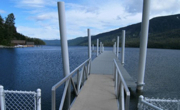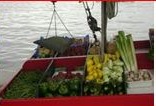 Interview with Andrew Willner of HARVEST - Harbor and River Vessel Transport Company Editor's note: Andrew Willner is a key environmental activist for the New York City region, with a long track record in conservation and political alliances. Baykeeper and the Waterkeeper Alliance are prestigious groups he has helped lead that have been templates for other regions' progress. Andrew became known to the Sail Transport Network and he joined up when we began working with Erik Andrus of Vermont Sail Freight Company last month. They are both renaissance men who greatly enrich the sail transport movement. 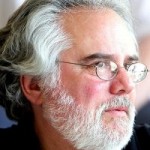 Andrew Willner
STN: When did you start thinking of The Big Apple as requiring sail transport? Do you sense widening acceptance of the idea? AW: In the 1980s I ran a small boat building and repair yard in Staten Island, NY. My partner, Michael Kortchmar and I both worked as Captain (Michael) and Mate (me) on the Schooner Pioneer. Both of us admired her work boat heritage and had a sketch done of a Sharpie Schooner that could haul both cargo and passengers that we could build. We never built that vessel, but others around the South Street Seaport community talked about sail freight. About the same time, we heard about an organization in Norfolk, VA called SAILA that advocated for sailing freight vessels. If I remember correctly the organization was started by a tug boat captain who had a Merrit Walter sail assisted "tugantine." 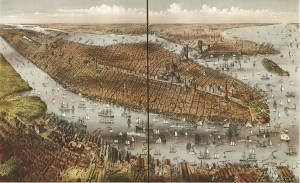 older sustainable New York City
The idea for the Harbor and River Vessel Transport Company (HARVEST) came from a discussion I had a few years ago with Christina Sun an artist who blogs about things maritime at Bowsprite STN: Harvest is a public blueprint for the future local economy of New York City and nearby New Jersey. Your concept also reads like a business plan. Would you agree that being totally open and embracing is the new way of doing things, instead of cards-held-close-to-the-vest and competing? AW: I do agree that my post sounds like a business plan. I am continuing in that vein to determine some of the costs and benefits of "purpose" built vessels, learning what I can about the logistics of moving food along the Hudson/Raritan region, and developing a financial spread sheet for potential investors and/or donors.  Vermont Sail Freight Project
I am hoping that by not taking "ownership" of this idea, that others with interest, means, and experience will either join up or take the idea and run with it. My interest is in seeing the concept become a reality rather than be the owner of a new company. I am committed to a sustainable transportation system, and food security for the NY City Bioregion more than I am in holding-cards-close-to-the-vest. I hope that I can use my contacts and experience to help move the concept forward, but if Erik's or anyone else's is the model to follow, I am happy embracing that idea and advocating for it. STN: What is the next step for Harvest, or some news that has developed after you wrote and published Harvest? 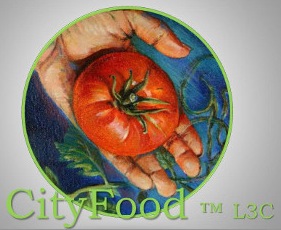 AW: Harvest has become a project of CityFood. CityFood is an L3C company, an interesting hybrid between a non-profit and for-profit business which means it can accommodate investors and is also eligible for foundation grants and donations. I am in contact with a naval architect who will give me some sketches of what a waterborne "pickup" that will pass the necessary inspections might actually look like. Additionally, I have found a Sandy damaged 42' motor sailor that could be converted to a freight hauler. Things are progressing, but no one has stepped forward to help finance the venture. I have also been letting people know about and advocating for the Vermont Sail Freight Project that will be completed and sailing before we even put the financing together. STN: Thank you for your visionary work. How can our readers around the world lend a hand or adapt Harvest to their own home ports? AW: Today, the water highways still exist and need to be reinvigorated. Maintaining maritime trade routes is more than just a celebration of tradition. In a carbon-constrained future, sustainable water transport will be necessary, and in the event of a regional disaster water-based community links can serve as vital infrastructure to the New York City Bioregion. 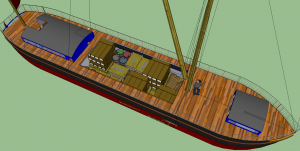 Vermont Sail Freight Project
So I am inviting interested and engaged people to come, talk, debate, and delve into the possibilities, the roots and routes of that new way -- to build a path where the shortsighted goals of “growth” and profit are supplanted by the goals of resilient economic prosperity, social justice, and human and ecological health. One in which a stumbling global economy is replaced by a sure-footed local economy and a local food system that can support and feed us through a challenging time of transition where we learn to trust and count not on banks or government, but on each other. As the NY/NJ Baykeeper, I learned to see the New York City Bioregion not as a collection of states or towns, competing industries or interests, but as a unified place. When seen from space, our Bioregion is without seams. The inland mountains and low hills feed thousands of tributaries, which feed our magnificent estuary and the sea. Our Bioregion is one abode -– one people that has forgotten its roots and lost its identity. This invitation is for a journey to find ourselves, to rediscover the great power of bioregional unity. Our strength, energy, and vision is needed now more than ever. 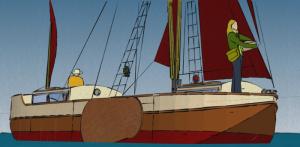 Vermont Sail Freight Project
As part of a plan for a sustainable future, HARVEST should be part of a regional dialogue. It is long past time to gather the brightest most committed people from all parts of the New York/New Jersey/Connecticut/and Pennsylvania Bioregion for a charrette, an open space dialogue and analysis, to discuss the best, most pragmatic route to a better future for our communities. Working together, we can develop a blueprint, an implementable comprehensive plan based on vibrant sustainable, Slow Money, small business, Main Street economy, focused on local energy and local food, with all of the resulting positive economic, social, and environmental outcomes. The participants in this great gathering must be many, varied and inclusive. We must invite entrepreneurs and social venture capital investors, planners, and co-housing/eco village developers. And Transition Town advocates, Permaculture practitioners and foodshed advocates; charitable foundation directors and futurists; students and union members; fishermen, environmentalists and economists; organic and biodynamic, rural, suburban, and urban farmers; academics, government officials, and local business people. All points of view will be needed to come up with implementable visionary ideas that can lead us safely through the impending crises and into A Bright Green Future. 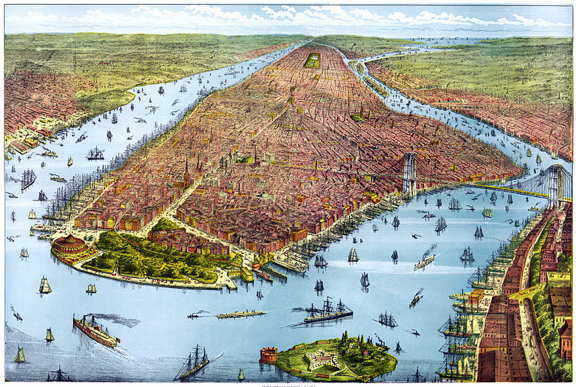 New York Harbor, 1879: from cbrowder.blogspot.de
* * * * * Visit Andrew Willner's website, particularly HARVEST - Harbor and River Vessel Transport Company Read Building the Vermont Sail Freight Project on the Sail Transport Network website. An anti-oil drilling campaign Waterkeeper Alliance was part of: Don't Buy Big Oil's Lie (a print ad of 2008) 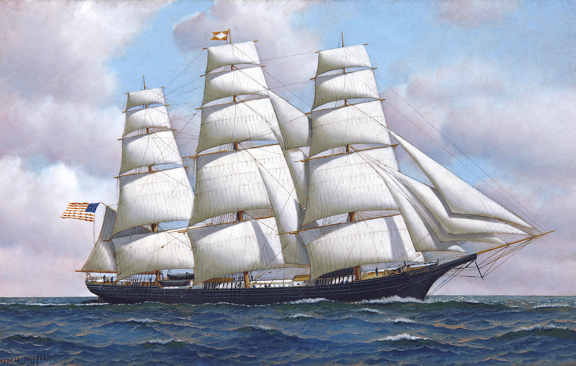 Flying Cloud, clipper service NY-SF, 1851 onward
 |
|||
 |
||
|
|
